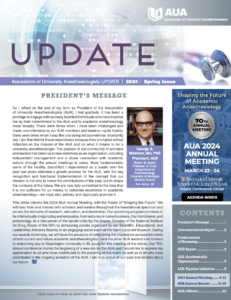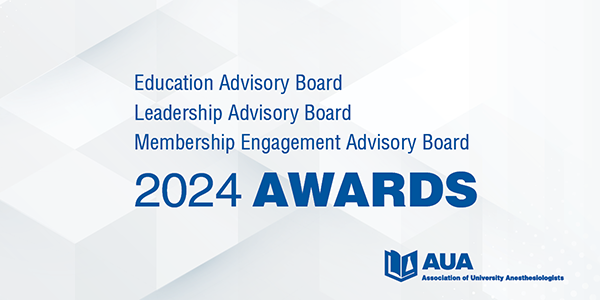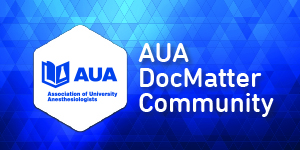LAB Report
Mentorship: Challenges and Future Direction
Throughout the ages, mentorship has remained an attractive concept of connection, learning, and support. In the Greek epic, the Odyssey, Ulysses leaves to war and entrusts his son Telemachus to the care of the old and wise Mentor. With Mentor’s guidance, it was hoped that the young prince would develop to his full potential. Later, mentorship became an integral aspect of learning the practice of medicine. As an apprentice, the student learned the skills of the expert master physician who imparted their wisdom, knowledge, and expertise.
In modern times, mentorship retained its principles of guidance, advising, and support. Mentorship in medicine, whether formal or informal, has been shown to have a positive impact on career trajectories. Faculty members who engaged in mentoring relationships report better career visibility, increased scholarship, more publications, more likelihood to be promoted, improved retention, and overall better career satisfaction.1-4
Despite these benefits, physicians who are women or from minoritized groups are less likely than their colleagues to report having mentors.2, 5 These observations can be attributed to a lack of visibility, access, training, and focus.
Lack of Visibility
Physicians who are women or from groups that are under-represented in medicine (URiM) experience a “visibility gap” that precludes them from finding and connecting with mentors.5 Some of the lack of visibility is related to women’s reluctance to brag about their own achievements or to seek mentors, when compared to men.5 Providing women and URiM with progressive leadership positions within an organization can help lift that invisibility cloak. However, increased visibility may entail increased vulnerability. This risk can be mitigated by peer groups and supportive leadership practices.
Lack of Access
Women and URiM are under-represented across positions of advanced leadership in academic medicine and anesthesiology. This leads to a paucity of women and URiM available to serve as role models and mentors. Accordingly, as their career advances, women and URiM have difficulty finding mentors with whom to connect.5 In addition, their mentors tend to have less “organizational clout.”3 Because of their limited influence, these mentors cannot become effective sponsors of their mentees.3 In turn, women and URiM in mid-careers are often asked to become mentors of younger faculty members. The burden of mentorship and of representation thus falls on a smaller group of physicians who may ultimately experience the “minority tax.” To mitigate that impact, mentorship commitments and community service should be included in the promotion criteria in academic institutions.
Lack of Training
A combination of skills is necessary for effective mentorship such as self-awareness and self-management, as well as active listening, empathy, and conflict resolution. Few mentors receive any training prior to engaging in mentoring relationships. While bias training has limited benefits, skills associated with emotional intelligence training may be helpful for both mentor and mentee.6 In addition, cultural sensitivity training may be needed for effective mentorship of women and URiM physicians.
Lack of Focus
Men and women receive different types of mentoring.5 The mentoring women receive focuses on self-improvement, self-awareness, and on the acquisition of goal-directed skills. By contrast, the mentoring men receive focuses on strategic planning, anticipation of next steps, and troubleshooting in the workplace.5 Mentoring for women and URiM should shift from tactical to strategic, from trying to “fix” the individual to integrating the workplace.
Establishing longitudinal mentoring programs within departments is further challenging because of limited resources in time, money, and personnel. Several solutions can help circumvent this challenge: connecting with mentors from other departments or from other institutions, engaging alumni to serve as mentors, and establishing peer mentoring groups.7, 8 In addition, medical societies are increasingly playing a role in bridging this gap to provide mentoring and networking opportunities for faculty members.
In 2020, the Leadership Advisory Board (LAB) was proposed by the AUA Council and approved by AUA membership with a key mission to help promote and advance the careers of academic anesthesiologists. To achieve this goal, LAB members Drs. Jeanine Wiener-Kronish, Tetsuro Sakai, and Maria Bustillo are building on their experiences to create a mentoring program within the AUA with three objectives:
to support the junior and mid-level faculty members of the AUA;
to inspire medical students to learn about academic anesthesiology;
and to collaborate with other academic societies in our field.
In service of this tripartite vision of support, inspiration, and collaboration, the group aims to build a sustainable and longitudinal mentoring program across the AUA in service of faculty members. The work builds on the current educational webinar offerings, on the networking programs, and on the speaker database initiated by the SAB.
This work is not foreign to the AUA’s mission and the dedication of its members. Many of the AUA members are recognized mentors in our field with innumerable contributions to the specialty and to the community of anesthesiologists.
The expertise, the commitment, and the support of AUA members will ensure the success of this initiative. For the many AUA members who want to contribute, please reach out to Vivian Abalama at [email protected] or to members of the mentoring committee. We hope that this work cements the role of AUA as an academic home for anesthesiologists, provides members with the connections needed for their success, and serves to inspire the future generations of academic anesthesiologists.
- Bonifacino E, Ufomata EO, Farkas AH, Turner R, Corbelli JA. Mentorship of Underrepresented Physicians and Trainees in Academic Medicine: a Systematic Review. J Gen Intern Med. 2021;36(4):1023-34.
- Farkas AH, Bonifacino E, Turner R, Tilstra SA, Corbelli JA. Mentorship of Women in Academic Medicine: a Systematic Review. J Gen Intern Med. 2019;34(7):1322-9.
- Patton EW, Griffith KA, Jones RD, Stewart A, Ubel PA, Jagsi R. Differences in Mentor-Mentee Sponsorship in Male vs Female Recipients of National Institutes of Health Grants. JAMA Internal Medicine. 2017;177(4):580-2.
- Shen MR, Tzioumis E, Andersen E, Wouk K, McCall R, Li W, et al. Impact of Mentoring on Academic Career Success for Women in Medicine: A Systematic Review. Academic Medicine. 2022;97(3).
- Gottlieb AS, Travis EL. Rationale and Models for Career Advancement Sponsorship in Academic Medicine: The Time Is Here; the Time Is Now. Academic Medicine. 2018;93(11).
- Faloye AO, Williamson J, Arora S, Nafiu OO, Peterson-Layne C. Formation of an Anesthesiology Residency Mentoring Program Using a Mentee-Driven Approach. A&A Practice. 2021;15(6).
- Faloye AO, Bechtel AJ, Methangkool E. Peer Mentorship: An Often-Overlooked Tool in Underresourced Academic Departments. Academic Medicine. 2021;96(1).
- Bustillo M, Gotian R. A mentoring circle supports women anaesthesiologists at every career stage. Br J Anaesth. 2020;124(3):e190-e1.














